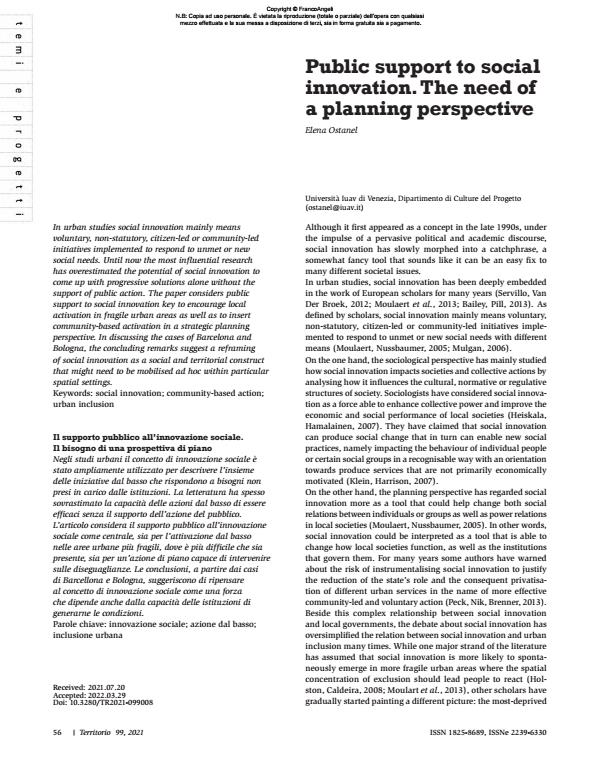Public support to socia innovation. The need of a planning perspective
Journal title TERRITORIO
Author/s Elena Ostanel
Publishing Year 2022 Issue 2021/99
Language English Pages 5 P. 56-60 File size 119 KB
DOI 10.3280/TR2021-099008
DOI is like a bar code for intellectual property: to have more infomation
click here
Below, you can see the article first page
If you want to buy this article in PDF format, you can do it, following the instructions to buy download credits

FrancoAngeli is member of Publishers International Linking Association, Inc (PILA), a not-for-profit association which run the CrossRef service enabling links to and from online scholarly content.
In urban studies social innovation mainly means voluntary, non-statutory, citizen-led or community-led initiatives implemented to respond to unmet or new social needs. Until now the most influential research has overestimated the potential of social innovation to come up with progressive solutions alone without the support of public action. The paper considers public support to social innovation key to encourage local activation in fragile urban areas as well as to insert community-based activation in a strategic planning perspective. In discussing the cases of Barcelona and Bologna, the concluding remarks suggest a reframing of social innovation as a social and territorial construct that might need to be mobilised ad hoc within particular spatial settings.
Keywords: social innovation; community-based action; urban inclusion
- Innovazione sociale: cosa cambia per la governance urbana? Una riflessione a partire dai casi di Inghilterra e Francia1 Francesca Bragaglia, in ARCHIVIO DI STUDI URBANI E REGIONALI 140/2024 pp.102
DOI: 10.3280/ASUR2024-140005
Elena Ostanel, Public support to socia innovation. The need of a planning perspective in "TERRITORIO" 99/2021, pp 56-60, DOI: 10.3280/TR2021-099008